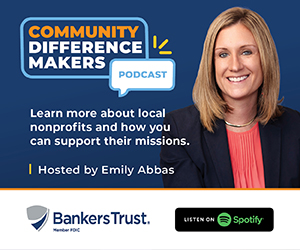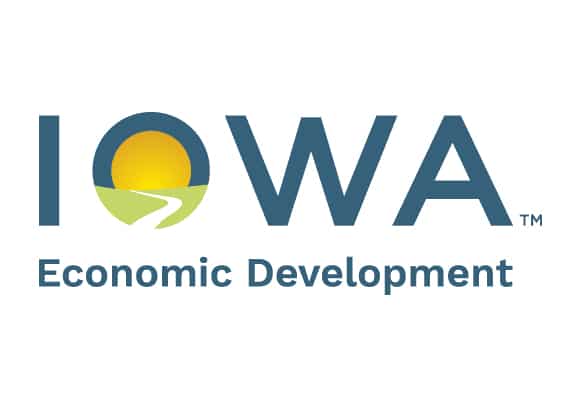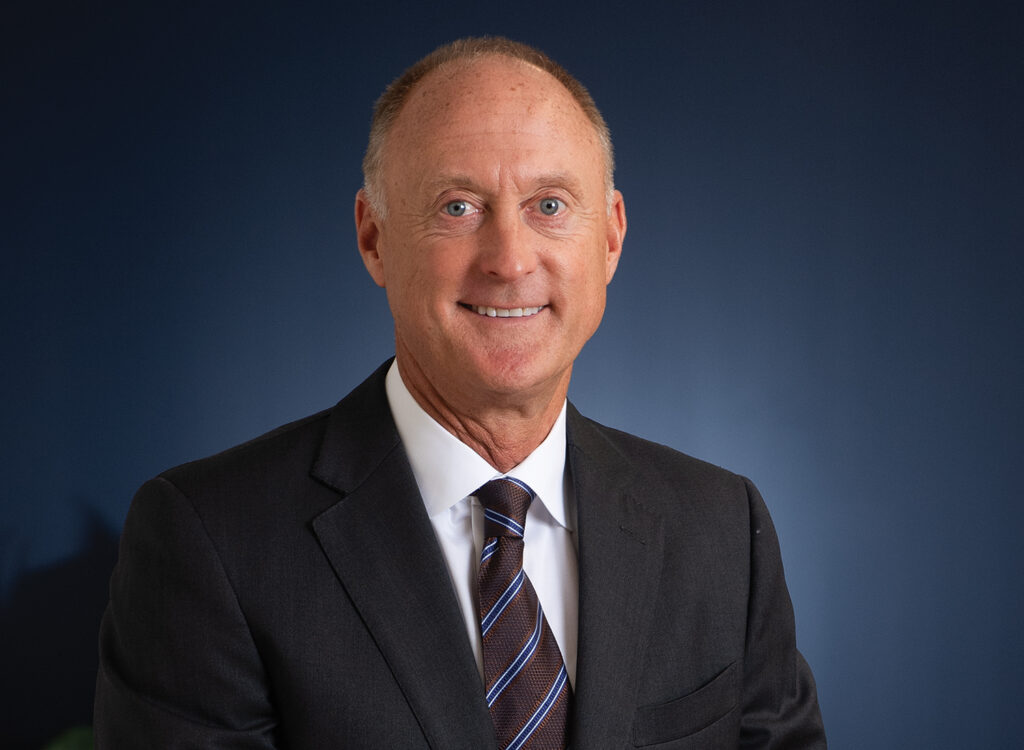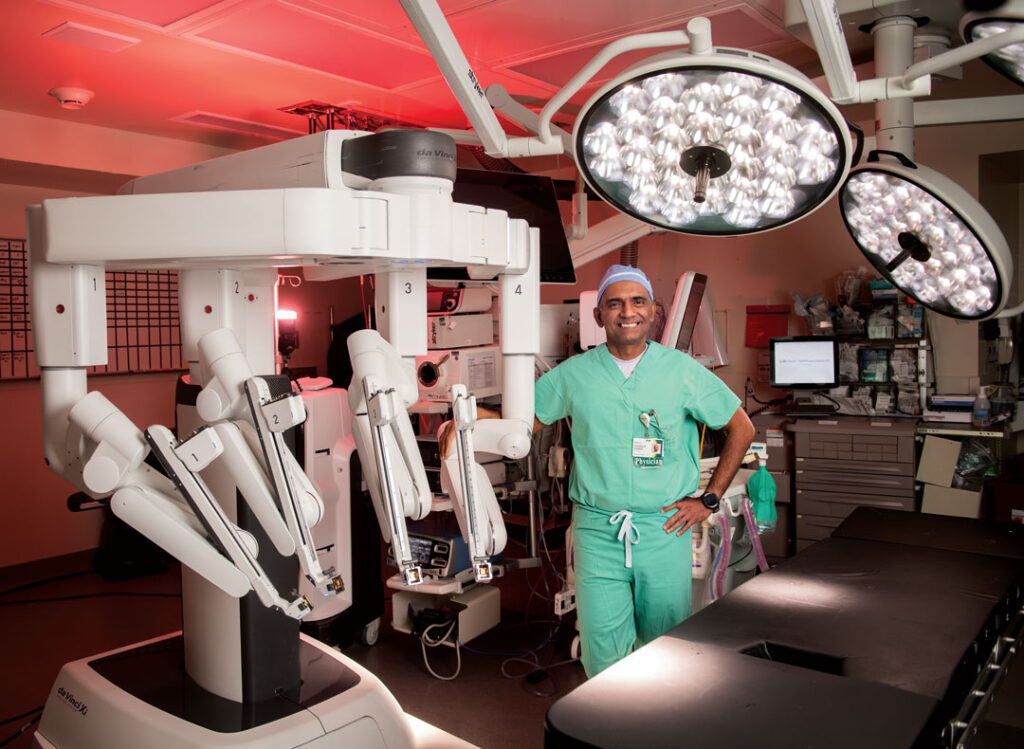Survey: AI’s increasing prevalence, employee well-being poised to drive business in 2025

Mike Mendenhall Jan 3, 2025 | 6:00 am
15 min read time
3,454 wordsBusiness Record Insider, Economic DevelopmentThe Business Record strives every day to bring a diversity of voices throughout Iowa to our audience to help you make sense of what’s driving change in the state’s business and nonprofit communities.
To begin 2025, the Business Record surveyed our audience and key members of the Central Iowa business, nonprofit and civic communities, to find out which trends to watch and what might shape the news over the next 12 months.
We asked readers to submit a response describing a trend they see coming in their industry or the community in 2025. Respondents provided analysis of trends they expect will influence industries in Central Iowa, the U.S. and globally.
Artificial intelligence is again top of mind across multiple sectors, the survey results show. Leaders expect AI acceptance in the workplace to accelerate and to provide efficiency in banking and loan financing approval processes, doctor-patient interaction, and more adoption of augmented reality for practical uses.
Real estate and economic development professionals see the real-world effect of AI and cloud technology, which rely on large data centers that need large parcels of empty land for development. Higher interest rates from 2024 could slow construction in 2025, but the Federal Reserve’s recent move to ease the benchmark rate could allow more deals to get done next year.
Employers expect employee well-being to remain a priority, while wages could begin to stabilize, creating more predictable cost projections for business owners.
Here are their predictions and trends to watch.
Responses have been lightly edited and condensed for clarity.
Arts, entertainment and nonprofits

The well of well-being
Prioritizing employee well-being continues to be a top focus for our organization and many others. The link between a healthy, rested and supported workforce and a highly engaged and retained workforce is being recognized. A few initiatives gaining traction are: flexible work models and shortened workweeks; added mental health and mindfulness resources being integrated into cultures; personalized and innovative benefits are being added, like those addressing caregiving; and even holistic workspaces with a focus on collaboration, relaxation or quiet areas are being integrated into physical spaces.
Beth Shelton: CEO, Girl Scouts of Greater Iowa
Banking and finance

Fiscal mindset of Gen Z and millennials
A trend we’re noticing at Bankers Trust focuses less on the products and services of our industry and more on the fiscal mindset of Gen Z and millennials. Through conversations and research, we find that the state of the economy is a top priority for these generations.They are hyper-focused on saving money, improving their credit scores and staying out of debt. This presents a prime opportunity for businesses and financial institutions to offer budgeting tools and financial literacy resources, as these topics can be complex and overwhelming, and can impact mental health. Moreover, these younger generations are more receptive to receiving advice from family members and friends on improving their financial well-being. They are also practicing “loud budgeting,” where they openly discuss what they can and cannot afford. This trend suggests they are setting firmer financial boundaries compared to previous generations, who often succumbed to social pressure to overspend.
Emily Abbas: executive vice president – chief consumer banking and marketing officer, Bankers Trust

AI will be used much more to drive efficiency in commercial finance
For years, those of us in commercial finance have been seeking ways to make the lending process much more efficient, thus saving the borrowers and ourselves time. AI gives us the opportunity to shrink the amount of time it takes to analyze and process lending requests efficiently. AI will not overtake the entire process, especially decision-making; it will greatly assist in critical time-saving and allow for more consulting, credit structuring and prospecting. AI is definitely on the doorstep of the wave of the future in the finance industry!
Jim Langin: executive director, Pivotal Business Partners

Range bound and down
While there is general consensus that the Fed is due for another few (up to 75 basis points) cuts in the Fed funds rate, it is increasingly likely that the five- and 10-year treasury rates are rather “stuck” in the 4% to 5% range. This is where most “long-term” capital expenditures, by both households and businesses, reference their borrowing. Trade barriers and significant reduction in immigration (plus deportations) both lend support to a renewal of inflation pressures, and benefits of AI or what have you (also known as productivity) are much longer term in nature. Iowa is especially sensitive to both trade (our state runs a significant surplus in exports versus imports – to the tune of over $5 billion annually) and immigration (foreign-born workers in construction, crop production and animal processing) are on the order of 30% and likely understated. Iowa and the Midwest economies in general face the potential for continued headwinds with regards to the refinance of existing debt maturities as well as increased pressure on labor availability, wage pressure and supply chains. Commercial and residential development are extremely sensitive to both as well. On a lighter note, mergers and acquisitions outlook is peachy, business leverage availability is as good as it has ever been, spreads are very tight versus historical averages, and capital markets have largely reset to a 4%-plus five-year Treasury tenor.
Eric Lohmeier: president, NPC Inc.

Interns will apply (and be hired) earlier
The economics of higher education are incentivizing value-conscious college students to accelerate their career-prep journeys. These students are eager to zero in as quickly as possible on the careers that best align with their values and ambitions, and internships are a highly effective way of discerning that. Organizations that are strategic about filling their talent pipelines are loving this, as we have the honor of helping young people find their right-fit careers while also building relationships with people who connect and thrive within our culture. The challenge for us and employers with similar approaches will be maintaining relationships with these individuals. Younger interns tend to take on more internships across their college experience, which makes it even more crucial to stay connected as they return to school and seek new opportunities.
Jill Shedek: human resources director, Bank Iowa
Economic development, government and law

Access to justice in rural areas
Iowa does not have enough lawyers in rural areas. We have counties without enough lawyers to assist clients or fill judicial vacancies. With lawyers graduating from law school with significant debt and an abundance of opportunity to pay off that debt by working for law firms in urban areas, we need more lawyers who are willing to work in rural areas. This trend is exacerbated by young lawyers in rural areas who need to both learn their craft and develop clients, skills that can take years to develop, but in rural areas those skills are needed to be exercised immediately. At Drake Law, we are working on filling in gaps on access to justice and expanding opportunities for young lawyers to practice effectively in rural Iowa.
Roscoe Jones Jr.: dean, Drake Law School

Accelerated regional connectiveness
The ability to work as one region across public, private and nonprofits sectors, across jurisdictional lines and across political affiliations has been a driver of our region’s growth for decades. It helps us stand apart nationally in attracting economic development projects. Our regional footprint is as large as ever, covering 11 counties. In hundreds of conversations over the past 18 months, we have heard from leaders throughout our rural, urban and suburban communities that there is a desire for even more collaboration and connection. We saw this when more than 300 people attended the inaugural Regional Summit in October, and we have seen the benefits of regional cooperation and support in the responses to disasters in Perry and Greenfield. We will continue to work with partners to foster regional collaboration because we know it is critical for economic growth and population growth.
Tiffany Tauscheck: president and CEO, Greater Des Moines Partnership

Hyper-scale technology developments
The data center-, IT- and technology-based industries have been reshaping their operations to meet the demands of a rapidly changing and progressive society. The surge in AI, high demands for water and power, and the large number of required acres for these mega-projects have caused an industry race to discover and create new and efficient solutions. Norwalk is in an exciting position to meet many of the needs of these innovative companies with the Southwest Development Corridor, stretching 3,200 acres from Iowa Highway 28 to Interstate 35, and massive infrastructure additions being built to accommodate thousands of acres of new high-tech and industrial developments. The Des Moines metro area will continue to be on the top of the list for high-value projects in the coming decade. With elections over, we’re seeing an increase in market confidence and economic investments, and foresee American manufacturing, tech and energy sectors causing a new gold rush over the next several years.
Hollie Zajicek: economic development director, city of Norwalk
Health and wellness

AI will continue to be a transformative force in health care
As with any technology, UnityPoint Health is focused on capitalizing on AI’s benefits to enhance patient care and reduce some administrative burdens for our clinical teams to allow more time for them to do what they do best – take care of our patients and communities. UnityPoint Health actively uses AI today in the following areas:
- Early indicators for patients at risk of poor outcomes (readmissions, sepsis, clinical deterioration, as examples) that allow care teams to intervene sooner or provide more coordinated care.
- Forecasting used to enhance operations: predicting length of stay, census levels and clinic appointment no-shows.
- Natural language processing to identify themes in survey feedback (internal engagement surveys or patient satisfaction surveys).
- Documenting physician-patient encounters: We recently piloted Nabla, a generative AI tool that autonomously captures any physician-patient encounter, in-person or virtual. Results of the pilot showed nearly 70% of users said they saved between 30 minutes and two hours a day in documentation. In addition, users noted improvement in several well-being measures. We have expanded Nabla to all physicians and advanced practice providers to provide a better balance during workdays.
Jon Rozenfeld: market president, UnityPoint Health – Des Moines

Employee health benefits
Costs for employee health insurance continue to rise at an unsustainable rate. We are seeing local employers seeking alternative arrangements for health care that lower their expenses while improving quality and access for their staff. We believe that employers will benefit from investing additional time on employee health coverage and seeking arrangements that align with both their employee needs and their bottom line.
Ben Vallier: CEO, the Iowa Clinic
Human resources and education

Addressing the atrophy of social skills
The rise of digital communication and remote work has led to the atrophy of social skills. Business etiquette is more important than ever. It is a Business Intelligence (BQ) that modern professionals cannot afford to be without. With most of us accustomed to the casual nature of online interactions, the ability to effectively present oneself professionally in all contexts (in person and virtually) has become neglected. The lack of etiquette and protocol skills, often thought to be the exclusive domain of the newest generations entering the workforce, is increasingly a career limiter for members of all generations. BQ is about establishing credibility, fostering collaboration and building trust. Human behaviors like punctuality, respectful email communication, effective listening, acknowledging common ground and maintaining eye contact create positive impressions and demonstrate reliability and respect. At a time when personal connections often feel secondary to technological innovations, mastering these skills is a differentiator for professionals. Expect to see a focus and increased investment in BQ training in the year ahead.
Rowena Crosbie: president, Tero International

Developing a skilled worker pipeline
Iowa companies will join others in offering more paid and mentored work-based learning opportunities to juniors and seniors in high school to work part time, learn about their companies and begin a training track to join the company in professional roles.
Rob Denson: president, Des Moines Area Community College

Broad-based employee ownership models gain popularity for business transitions
As more businesses transition due to owners retiring, broad-based employee ownership models are emerging as a viable option. These models drive economic growth, sustain local communities and provide significant benefits to employees.
Deb Giarusso: senior program manager, UNI Advance Iowa IA-CEO

Stabilization in compensation packages
After several years of seeing dramatic compensation increases in nearly all sectors, 2025 is going to bring stabilization. While skilled talent is still in demand and compensation will continue to rise (3% to 4% on average), employee and candidate expectations have tempered and employers are now able to better plan for their labor costs in terms of their organization’s entire financial picture. Palmer Group’s 2025 Salary Guide provides additional resources and information on this topic.
David Leto: president and CEO, Palmer Group
Insurance and investments

Increased AI adoption
As people continue to use AI tools more in their everyday lives, they’ll be more open to using them in the workplace. While we’ve seen resistance to AI from employees in the past, perceptions shifted in 2024. Most are now reporting it is helpful, important and makes things in their industry better – and employers agree. This was validated in the soon-to-be-released Principal Well-Being Index, which keeps a regular pulse on workplace trends.
Christina Moffatt: business development manager, Elevate by Principal

Holistic well-being – going beyond the basics
As a health and wellness company, a trend I see continuing in 2025 is a focus on employee well-being. Medical, dental, vision and retirement solutions are now considered baseline benefits. Eighty-two percent of U.S. consumers consider wellness a top or important priority in their everyday lives, according to McKinsey. In our multigenerational workforce, employees desire benefits and wellness options that address their full spectrum of health – physical, emotional, financial, career and community. Financial well-being provides the foundation for basic needs as well as our passions and future needs. Physical health addresses overall health, while emotional well-being guides our thoughts and feelings, fostering resilience and positive relationships. A fulfilling career offers purpose and a sense of accomplishment, while strong community engagement provides support and connection. By nurturing all aspects of wellness, companies can help create a vibrant and balanced life for their employees, where we all can thrive in our professional and personal lives.
April Schmaltz: president and CEO, Delta Dental of Iowa
Manufacturing

Intentional succession planning
The sustainability of Iowa’s rural communities and cities is dependent on multigenerational family businesses and privately held companies. ABI members have been intentional about succession planning for decades. As the “silver tsunami” continues, the focus on succession planning will become more intentional and we will see an increase in supportive offerings from businesses and organizations. ESOPs (employee stock ownership plans) will become even more popular for small to midsized businesses. ABI looks forward to supporting our members by connecting them with other members who can be resources and developing programs to assist businesses.
Nicole Crain: president, Iowa Association of Business and Industry
Real estate and development

Construction slowdown
I believe that construction activity will slow for 2025. Real estate development deals were harder to put together during 2024 because of higher interest rates and construction price increases. This will result in fewer projects being built in 2025. The impact of American Rescue Plan Act grants being largely completed will also reduce the number of public projects going forward. The other headwind impacting municipal funding is the state Legislature limiting growth of towns and cities. This will force many communities to say no to opportunities. This combination of headwinds will make for fewer public and private construction projects in the next year. I would anticipate downward pressure on pricing from the subcontractor community. The last few years of price increases on products and labor were not sustainable, so at a minimum, I expect the increases to cease. If interest rates are reduced during 2024, and the construction market is more competitive, I would expect a few more deals being put together in 2025, resulting in stronger demand for construction services in 2026.
Jake Christensen: president, Christensen Development

Flight to high-quality office space
Flight to quality is a trend that we have been discussing post-COVID, but we are seeing it now more than ever. Office customers are being intentional about how their space functions, and how the design and amenities support their employees and culture. Office space customers are upgrading to buildings that are well located and offer modern fitness, child care and collaborative amenities. This usually includes contemporary design with exposed ceilings and glass offices to maximize natural light. To offset the more expensive design and construction, customers are sharing in the cost and signing longer-term leases. This is a positive commitment for office space in the Des Moines area.
Adam Kaduce: president, R&R Real Estate Advisors

Property-casualty insurance costs
Rising costs and requirements to tenants and landlords.
Kevin Crowley: COO and manager, NAI Iowa Realty Commercial
Restaurants and hospitality

Expansion of consumable hemp (THC) products in hospitality establishments
In 2025, Iowa’s hospitality industry will see growing consumer interest in THC-infused products, like seltzers, cocktails and edibles such as gummies. While recreational marijuana use remains illegal in Iowa, the 2018 Farm Bill opened the door for businesses to legally create and sell products using hemp-derived compounds. This new category of food and drink is catching on quickly — especially with Gen Z consumers, who tend to drink less alcohol and seek new alternatives. For many restaurants and bars, these products could offer a much-needed, highly profitable revenue stream. In some cases, THC drinks are not just competing with wine and craft beer — they’re already outselling them. As demand continues to rise, more businesses will likely experiment with THC offerings in their establishments. But with opportunity comes challenges. Few training programs exist to teach staff how to safely serve THC products, and finding insurance providers willing to cover establishments offering them remains difficult. Over the next year, striking the right balance will be key. Restaurants and bars that adapt thoughtfully could see big opportunities in Iowa’s evolving food and drink scene.
Jessica Dunker: president and CEO, Iowa Restaurant Association
Technology and innovation

Companies will be more selective on whether to go to the cloud for their solutions
As companies have gained more experience with cloud technologies, they’ll realize that the benefits don’t outweigh the costs of maintaining an on-premise solution. In general, the industry will bifurcate to larger companies that will stick with both on-premise and cloud solutions (“hybrid”) as they already have the necessary skills. For smaller companies and startups, they will stick with cloud-only solutions so that they can focus their energies on product fit.
Cameron Presley: professional software consultant, LeanTECHniques Inc.

Increasing interest in supporting and investing in startup and small businesses
Despite a national downturn in large venture capital investments, an uptick in local and regional angel investors seeking and investing in promising startups is a positive economic and cultural sign. We are seeing entrepreneurs and investors across a wide age-range take informed and calculated risks in greater numbers than a year ago.
Tej Dhawan: managing director, Plains Angels

The rise of augmented reality
Keep your eye on augmented reality (AR) in the coming years as it moves beyond the realm of Snapchat filters and “view in your room” gimmicks. The convergence of several advancements is driving adoption in industry and will soon make its way into more of our daily lives. Over the last few years, near ubiquitous connectivity, advances in computer vision, and cloud computing have enabled improvements to hardware like lightweight AR glasses. If personal AR glasses aren’t your style, Samsung’s release of their transparent micro LED earlier this year may end up being integrated into your car’s windshield in the near future, highlighting obstacles in the roads such as potholes or the occasional deer, making for a safer driving experience (and you’ll probably be able to watch Netflix on it to boot).
Brandon Carlson: president, Lean TECHniques Inc.
Transportation

AI and automation
Advances in automation that have been developing for the last several years continue. Widespread adoption of autonomous vehicles doesn’t occur in 2025, but Tesla’s most recent Full Self Driving version exemplifies an advancing trend. Implications are significant for many industries, including airports. Commercial service airports rely on parking operations for up to one-third of total revenue, so what happens when vehicles can just be sent home to park in the garage? Robotaxis will happen at some point, so how does that impact vehicle ownership and auto insurance in the future? 2025 may be the year to focus on the longer-term impacts if you will be touched by this form of AI.
Brian Mulcahy: assistant executive director, Des Moines Airport Authority

Mike Mendenhall
Mike Mendenhall is associate editor at Business Record. He covers economic development, government policy and law.










